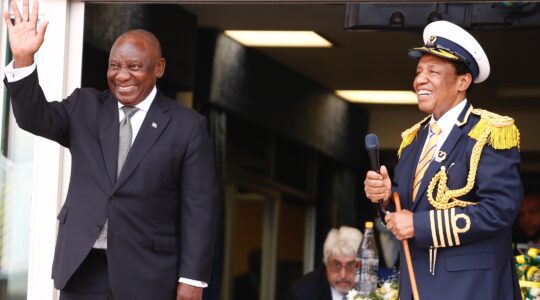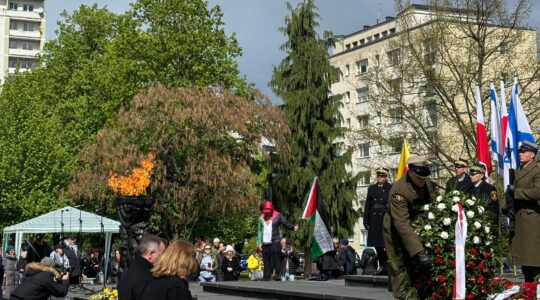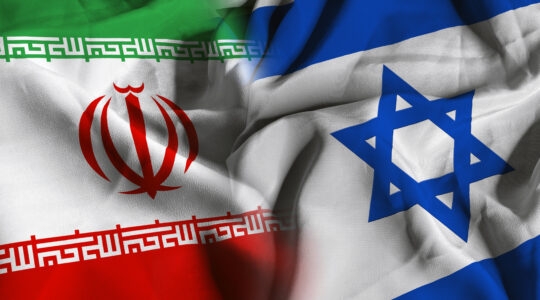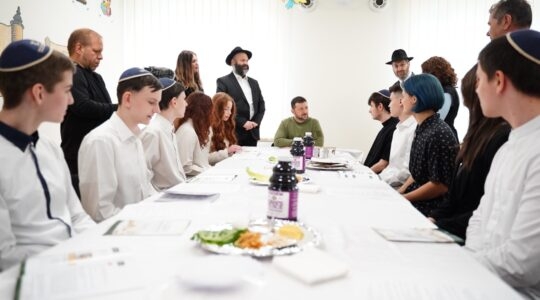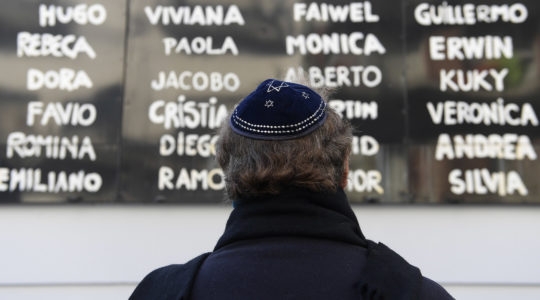.jpg)
If you follow the trail of Jewish devastation across Europe, you find this phenomenon repeatedly: Well-intentioned Europeans working to reconstitute some vestige of Jewish life in places with no living Judaism.
I’ve met several of these people over the past few days here, and while it’s hard to question their sincerity, their success — if one can call it that — is another issue entirely.
This morning I took the train from Madrid a half-hour south to Toledo, the medieval city that was the center of Jewish life in Spain at a time when Spain was the center of Jewish life for the whole world. The synagogue there has been transformed into a museum that, after the Prado in Madrid, is among the most visited in all of Spain. Some 300,000 visitors passed through its gates in 2010, half of them locals.
In the main hall, a beautiful vaulted ceiling shows evidence of the Jewish encounter with Islam. Ornate stonework along the walls is vaguely reminiscent of the famous Gaudi cathedral in Barcelona. The room bears the hushed quality of all sacred spaces. But beyond that there’s virtually no original artifacts dating from the time when Jews actually lived and prayed here..jpg)
The same is true of the more recently established Jewish museum in Girona. A handful of ancient stones and Hebrew inscribed Jewish tombstones are all that’s left.
Around the corner is another synagogue. An exhibition of Jewishly inspired atwork ringed the perimeter, and several tour groups were hearing short presentations on the history of the Jews in Spain. A cross testifying to the building’s use as a church after the expulsion is set into the wall near the ceiling. This is what most of these sites have been reduced to: tourist sites, Jewish art, educational activities — but no Jews.
At a table near the entrance I met Maria Gloria, a Catholic nun wearing a brown habit and collecting donations. Around her neck hung a wooden cross with a silver Star of David in the center. Maria Gloria is part of a peculiar Christian order, the Maria Fraternity Star of the Morning, founded by a French Jew named Abraham Korn, the artist who had done the paintings I had seen in the synagogue.
I located Korn a short while later at the order’s residence on the Plaza de Santa Isabel. Korn’s son, Father William, greeted me at the door wearing the same brown habit and cross with a Jewish star. In his room on the second floor, Korn told me how he was born to a French Jewish family during World War II and had grown up with largely negative feelings about Judaism. Until one day, at age 36, he discovered "Hashem."
Besides William, Korn has two daughters: a Christian living in Toledo, and a religious Jew living in the West Bank settlement of Tekoa. We conversed in Hebrew, which Korn picked up during three years that he lived in Jerusalem.
"It’s crazy," Korn said of his unorthodox family. "But all stories of God are crazy."
Today, Korn and his 10 followers have taken a threefold vow: poverty, chastity, and devotion. They celebrate Shabbat and Jewish holidays. On Yom Kippur, he recites the Kol Nidre prayers in the synagogue. A Hebrew Bible and other books of Judaica, including an Artscoll translation of the Book of Esther, sit on a shelf. "I’m more Jewish since I became a Catholic," Korn said.
Here I was in what was once the most Jewish city in the world, and the only Jew I can find turns out to be a Catholic who loves Israel. "This is the story of the Jews," Korn told me. "I am a Jew. I feel like a Jew. It’s a great responsibility."
The mission he believes God has charged him with is to build a bridge between the Church and the Jewish nation — not for the purpose of conversion, he assured me, but to bring peace and redemption. "Unity is our main thing," he said. "This is God — only one. But we need to work for this here. And the most important thing is the connection between the Church and the Jewish people. Only this can work against the Islamic invasion."
Wait — what? Islamic invasion? I tried to probe this a little further — but the truth is I didn’t want to (and I had a train to catch). I didn’t want to lure this gentle man into saying something intolerant about Muslims. But I couldn’t quite resist. Why can’t Islam be part of this bridge of coexistence?
"This is not the same religion," Korn said. "This is something else. For me, I can live in peace. For them, I don’t know. I want peace. And also my daughter. She wants to live in peace. But they — I don’t know if they want to."
